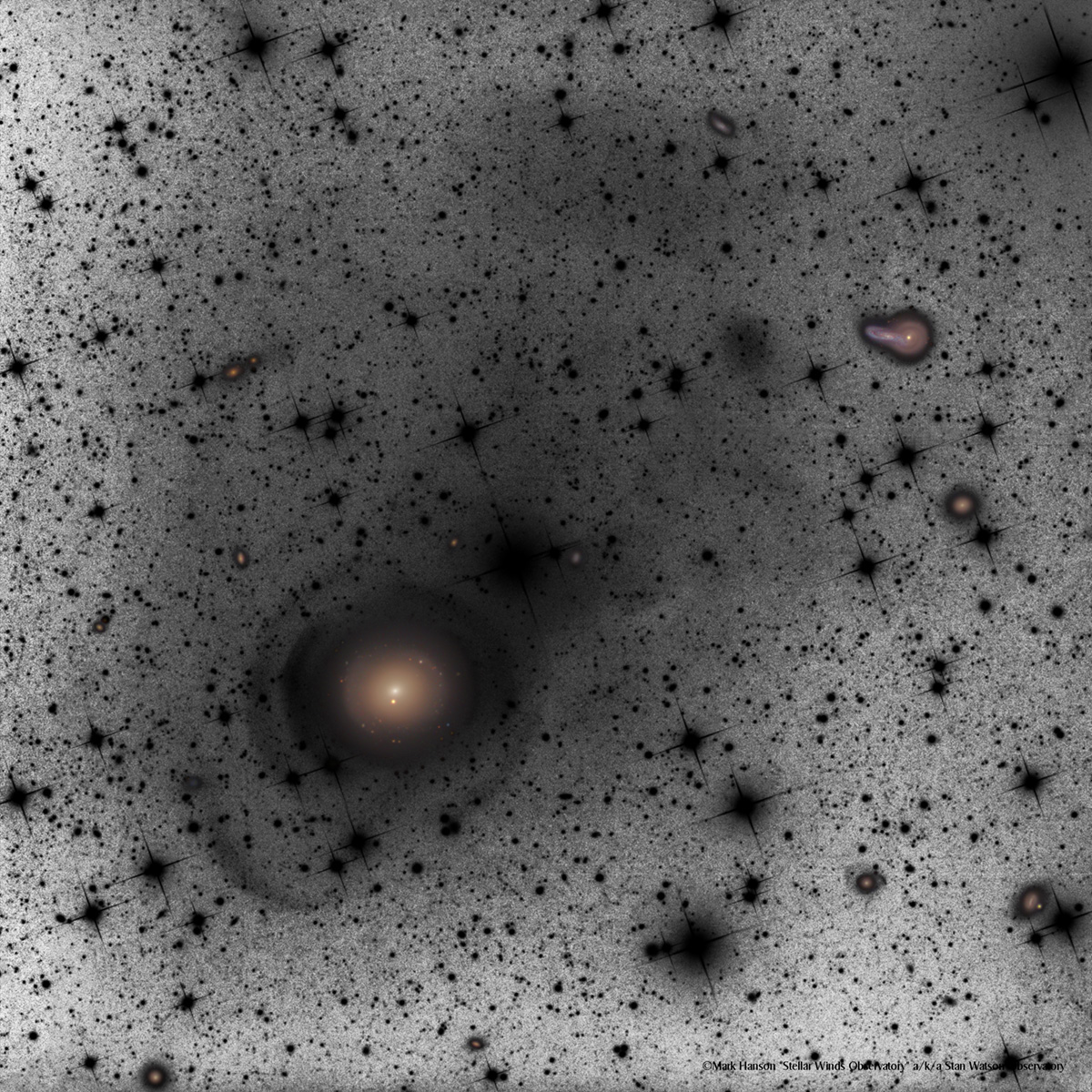NGC 5557
Copyright Mark Hanson
Description by Sakib Rasool
The cosmic scene depicted in this deep astrophoto is the region towards the elliptical galaxy NGC 5557 in the constellation of Bootes. For a long time, ellipticals were regarded as the placid endpoint of galactic evolution. However this view has been challenged by the discovery of tidal shells and plumes around a large number of elliptical galaxies in the past few decades. These extended structures convey a rich kinematical history involving mergers with other galaxies, a process commonly associated with interacting spiral galaxies.
Located at a distance of 126 million light years, NGC 5557 is enveloped by multiple shells and extremely faint tidal plumes that extend for 1.2 million light years with less than the full extent included in the field of view of this image. Professional studies have surmised the material constituting the tidal structures likely originates in a major merger with a large galaxy whose original structure has been disrupted beyond recognition. In the chaos of all this tidal disruption, the formation of so-called tidal dwarf galaxies can be triggered. At least three tidal dwarf galaxies have been discovered associated with NGC 5557 but only one is included in the field of view of this image, it is the fuzzy detached object located at the northern tip of the curved tidal stream to the south. Their discovery represent the oldest examples of their kind in the nearby universe and have an estimated age of 2-4 billion years.
Complementing this hive of activity is the interacting galaxy pair NGC 5544-5, which are also collectively known as Arp 199. NGC 5544 is the face on galaxy while NGC 5545 is the blue spiral that overlaps it. They also have a similar distance of 140 million light years. Interestingly, all three galaxies were discovered on the same night in 1785 by William Herschel.
"Stellar Winds Observatory" a/k/a Stan Watson Observatory at Dark Sky New Mexico
Planewave 24", LRGB, 540,210,210,210



